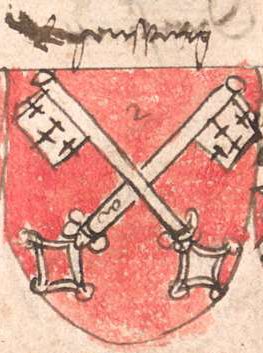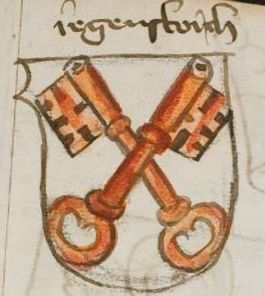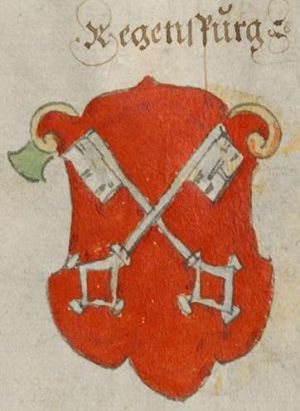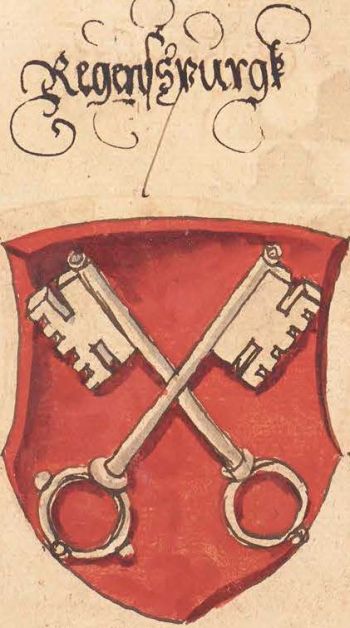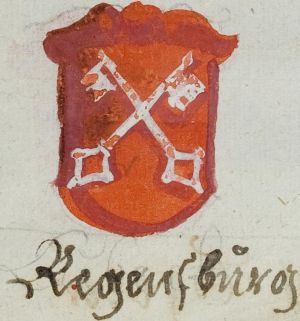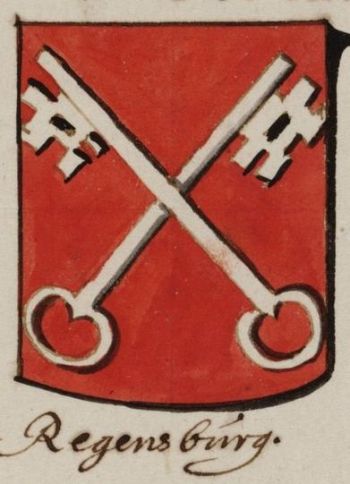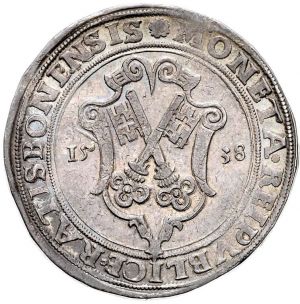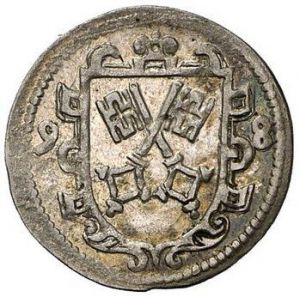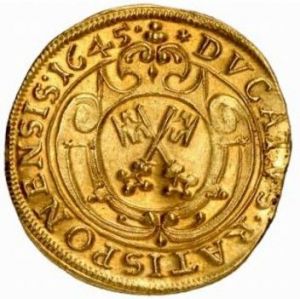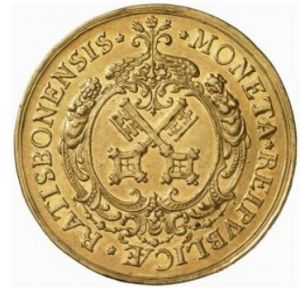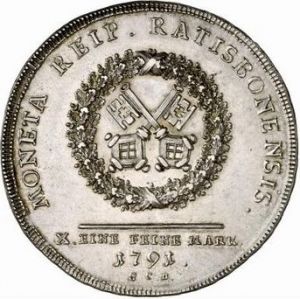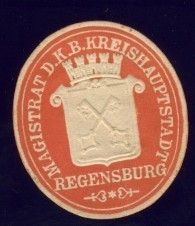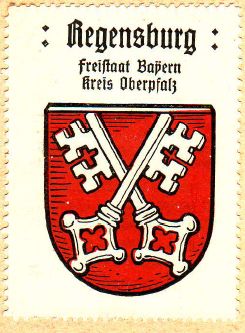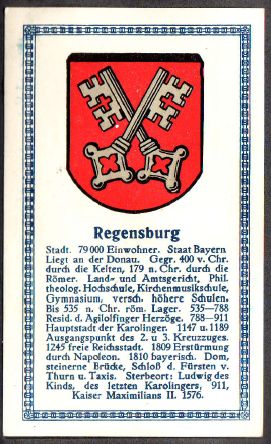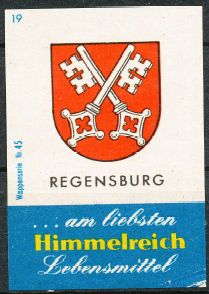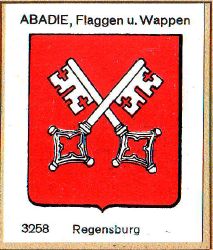Regensburg: Difference between revisions
Knorrepoes (talk | contribs) m (Text replacement - "Literature :" to "'''Literature''':") |
Knorrepoes (talk | contribs) m (Text replacement - "/Arms of " to "/Arms (crest) of ") |
||
| Line 7: | Line 7: | ||
Additions : 1904 Karthaus-Prüll; 1924 [[Reinhausen]], Sallern, Schwabelweis, [[Stadtamhof]], Steinweg, Weichs, Winzer; 1938 Dechbetten, Großprüfening, Ziegetsdorf; 1977 Burgweinting, Harting, Oberisling | Additions : 1904 Karthaus-Prüll; 1924 [[Reinhausen]], Sallern, Schwabelweis, [[Stadtamhof]], Steinweg, Weichs, Winzer; 1938 Dechbetten, Großprüfening, Ziegetsdorf; 1977 Burgweinting, Harting, Oberisling | ||
[[File:regensbu.jpg|center|alt=Wappen von {{PAGENAME}}/Arms of {{PAGENAME}}]] | [[File:regensbu.jpg|center|alt=Wappen von {{PAGENAME}}/Arms (crest) of {{PAGENAME}}]] | ||
{| class="wikitable" | {| class="wikitable" | ||
Revision as of 09:28, 16 November 2022
This page is part of the German heraldry portal Deutsche Wappensammlung |
Heraldry of the World |
|
German heraldry:
|
Selected collector's items from Germany:
|
REGENSBURG
State : Bayern
Urban District (Stadtkreis) : Regensburg
Additions : 1904 Karthaus-Prüll; 1924 Reinhausen, Sallern, Schwabelweis, Stadtamhof, Steinweg, Weichs, Winzer; 1938 Dechbetten, Großprüfening, Ziegetsdorf; 1977 Burgweinting, Harting, Oberisling
| German | In Rot zwei schräg gekreuzte silberne Schlüssel. |
| English | No blazon/translation known. Please click here to send your (heraldic !) blazon or translation |
Origin/meaning
The arms show the crossed keys of St.Peter, the patron saint of the city.
When the keys were first used on the arms of the city is not clear; they are known since around 1300 as arms of the Counts of Regensburg and since 1320 as a symbol of the city. On seals they first appear in a small shield on a seal dating from the end of the 14th century. The main seal of the city, which dates from the end of the 12th century, shows St. Peter sitting on a throne, holding a key. Smaller seals from the 13th and 14th century show only the bust of St. Peter, wearing a tiara, or papal crown. All small seals since 1519 show only the arms with the crossed keys.
Similarly, the city uses since the middle of the 14th century only the keys as its symbol, either in or without a shield.
| The arms in the late 15th century |
The arms in a manuscript from 1514 |
| The arms in a manuscript +/- 1530 |
The arms in a manuscript 1550-1700 |
| The arms in a manuscript from 1565 |
The arms in a 16th century manuscript |
The arms in the Wapen- en Vlaggenboek van Gerrit Hesman (1708) | |
| The arms on a 1538 coin |
The arms on a 1598 coin |
| The arms on a 1645 coin |
The arms on a coin from +/- 1710 |
| The arms on a 1791 coin |
The arms by Tyroff (1835) |
| Seal from around 1900 |
The arms by Hupp in the Kaffee Hag albums +/- 1925 |
| The arms in the Abdulla album, 1928 |
The arms on a 1960s matchox label |
| The arms in the Abadie albums |
The arms in the city (source) |
Contact and Support
Partners:
Your logo here ?
Contact us
© since 1995, Heraldry of the World, Ralf Hartemink 
Index of the site
Literature: Stadler, 1964-1971, 8 volumes; Hupp, O: Kaffee Hag albums, 1920s



